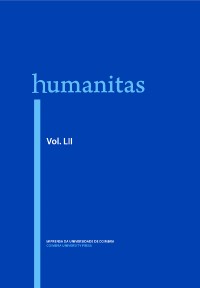Please use this identifier to cite or link to this item:
https://hdl.handle.net/10316.2/28181| Title: | 3 - O lugar da Regula monástica communis no Monaquismo Hispânico | Authors: | Dias, Paula Barata | Issue Date: | 2000 | Publisher: | Faculdade de Letras da Universidade de Coimbra, Instituto de Estudos Clássicos | Abstract: | Despite the specific nature of the Regula Monástica Communis, a anonym text from Hispania's seventh century, most modem scholars. namely A. de Vogilé, (Les Régies Monastiques Anciennes (400-700), Brepols, Turnhout-Belgium, 1985, p. 55) and U. Dominguéz dei Vai, (História de la Antigua Literatura Latina hispano-Cristina, IV, Fundación Universitária Espafiola, Madrid, 1999, pp. 325-358), have been considering this text as one of the ancient monastic rules. In this article, the author proposes the view that the text in question is essentiaily homiletic and that the name of Regula Communis is the way frutuosians monks called the Regula Monachoram after the nomination of Saint Fructuoso to the status of bishop. The argumente derive, firstly, from the discourse analysis, its modi dicendi, its style and rhetoric strategies, its emission, context and content; secondly, from the comparison between the Regula Monástica Communis and three sorts of texts: canons from hispanic councils; homiliae ad monachos, collected in the corpus of Bento de Aniano; and saint fructuoso's Regida Monachorum, known as the prima of frutuosianism and close to the so called RMC. This article is the third chapter of the author's master thesis, whose publication is to be continued in the next volume of Humanitas. | URI: | https://hdl.handle.net/10316.2/28181 | ISSN: | 2183-1718 |
| Appears in Collections: | HVMANITAS |
Files in This Item:
| File | Description | Size | Format | |
|---|---|---|---|---|
| humanitas52_artigo9.pdf | 12.67 MB | Adobe PDF |  |
Items in DSpace are protected by copyright, with all rights reserved, unless otherwise indicated.
